- Home
- Simon Winchester
The Perfectionists Page 23
The Perfectionists Read online
Page 23
The Hubble Space Telescope was launched and then placed into orbit 380 miles above Earth on April 24, 1990. After its mirror was found to be flawed, it was repaired in space in December 1993. The Hubble has since performed near-flawlessly, sending back countless captivating images of interstellar space.
It was placed gently into orbit, 380 miles above Earth, on April 24, 1990. At the time of its launch, Edwin Hubble, America’s great deep-space astronomer, who was the first to suggest that the universe might be expanding, who examined the universe beyond our own pitifully small galaxy, and after whom the telescope is named, had been in his grave for almost forty years. This in-space observatory, at launch time more than a quarter century in the planning, was in essence a project to push still further inquiry into the state of faraway stars and galaxies and nebulae and black holes.* The device was less a memorial to him than a continuation of his work.
The orbiter Discovery took the Hubble up into space, to a place well above the distortion and pollution of Earth’s atmosphere and comfortably away from the harsher pulls and tugs of geomagnetism and of gravity. It was the seventh flight of this particular workhorse of a space shuttle—the orders were for a short (five-day) in-and-out, drop-it-and-leave-it mission. The flight was designated STS-31, and, despite the numbering, was the thirty-fifth mission of NASA’s five reusable Space Transportation System vehicles—except that, at the time of the launch, the number of orbiters was down to four.
And because of that grim arithmetic, those who watched the shuttle launch on that warm Florida spring morning were more white-knuckled than usual. Four years before, the sister orbiter, Challenger, had exploded seventy-four seconds after takeoff, killing everyone aboard. After three years of memorials and investigations and repercussions and modifications, NASA decided that Discovery would be the vehicle to perform the first post-accident flight. Her mission, then, in September 1988, was designed as much for confidence building as it was for the execution of major science. The nation breathed a collective sigh of relief when the launch in Florida, the four subsequent days spent soaring around the world, and the then-picture-perfect landing in California all went without incident.
Discovery flew again, twice, in March and November 1989, by which time the country had become largely convinced that the problems that had brought down Challenger (a rubber seal that had stiffened in the subzero weather of the midwinter launch day and caused fuel to leak from the solid rocket booster) had been solved. Still, this STS-31 was an extremely high-value mission: the Lockheed-built telescope and its Perkin-Elmer Corporation optics, snugged safely away in the cargo bay, had already cost the taxpayers around $1.8 billion. There was much consequent anxiety before the launch. This anxiety barely diminished even after the successful liftoff. Indeed, the pressure was unrelenting until the moment the next day when the crew used Discovery’s Canadian-made robotic arm to lift the bus-size payload out of the hold; set up its solar panels and telemetry and radio aerials; switch it on, as it were; and finally let the first of NASA’s so-called great observatories free-float into orbit.*
Hubble, enormous during its construction (the size of a five-story house) but minuscule in appearance when floating in the immense nothingness of space, is perhaps not the prettiest of sights. There is something rather awkward, almost teenager gawky, about its appearance—like a once-chubby, silver-coated boy who has suffered a sudden growth spurt and who floats along on his own looking, his mother unable to afford new clothes for him, rather wrinkled and ungainly and uncomfortable with his new shape. Moreover, the hinged lid at one end, which admits the light into its main tube, looks awkward, too—so much like the open top of a kitchen garbage can that you rather expect a foot pedal to be protruding from somewhere, keeping it open all the while. Instead of pedals, there are solar panels, squared off and able to furl and unfurl as the temperature varies depending on the telescope’s attitude and position.
It is wanting in prettiness maybe, but its two builders and NASA, their customer, knew it to be an extremely powerful piece of kit. In many ways it was a quite simple telescope, a so-called Cassegrain reflector, well known to any amateur backyard stargazer, with a pair of mirrors facing each other—the primary mirror gathers the light and reflects it to the smaller, secondary mirror, which then reflects it back once again, through a hole in the center of the primary and to a variety of observing devices (cameras, spectrometers, and detectors of various wavelengths from ultraviolet all through the visible-light spectrum and into that of the near-infrared). The detectors were packed into telephone booth–size boxes arranged tightly behind the primary mirror, and from which the gathered data would then be beamed as telemetry signals back down to Earth.
The specific design of Cassegrain used in the Hubble telescope involved the use of a particular mirror shape—they were called hyperbolic reflectors—that specifically reduced the chance of two types of aberrations in the image, the comet trail–like aberration known as coma and the edge-of-lens error known as spherical aberration. And as Hubble settled itself into space that May (once Discovery had fired her braking thrusters and dropped out of orbit and spiraled her way down earthward to leave the telescope quite silent and alone), the device, with all its optical distortions and aberrations duly thought of, anticipated, and averted, seemed richly pregnant with astronomical potential.
Except that, six weeks later, an unanticipated nightmare began to unfold, an unimagined nightmare—for this was no Challenger, where frantic engineers far away, who knew of the risks of launching in freezing weather, tried desperately to cancel the flight. In Hubble’s case, all was blissfully normal, everyone lulled into a state of contentment—and, as it happens, hubris.
All began routinely. Three weeks after the telescope had reached orbit, on May 20, by which time all were confident that it had cooled itself from the warmth of the Florida beachfront to the ambient temperature of its new surroundings, Mission Control sent out a signal to unlatch the hinged front door to the optics.
Hubble was now open for business. The first light from a million stars—and this was the way the moment was named, the First Light—flooded into the barrel of the telescope. From there, it headed toward the primary mirror and made its reflective journey back and forth until, ultimately, it fed itself into the detectors and became the data that were so eagerly awaited by the watchers of the skies on Earth at the Space Telescope Science Institute at Johns Hopkins University in Baltimore, far down below. The transmissions were perfect. Data were streaming down, just as they should. An astronomer named Eric Chaisson inspected the incoming images, and then, suddenly, as he examined what he saw, he felt, as he put it, “a total deflation in my gut.”
Something was horribly, horribly wrong. Everything was blurry.
Two weeks later, Edward Weiler, who at the time was chief scientist for the Hubble program at NASA’s Goddard Space Flight Center, thirty miles away, was basking in the apparent success of the early stages of the mission. But then he received an alarming telephone call. It came from one of his colleagues at the science control room in Baltimore. Try as they might to improve matters, the panicky-sounding scientist there told Weiler, every single picture that had been beamed down from Hubble was totally out of focus (except, by some cruel trick, the very first, which seemed very sharp indeed).
They had tried for days, not daring to report the news, to fine-tune the images by moving the secondary mirror by infinitesimal amounts, to tease out a picture from the primary mirror, which was sharp and clear. But while most of the astronomers in the control room agreed that the image qualities they acquired were as good as or better than their equivalents from ground-based telescopes, they were not nearly as good as they should have been. Indeed, not even that was true; it was wishful thinking. The brutal truth was that not a single one of the pictures could be coaxed into a usable degree of sharpness. Each one of them was a grave disappointment. They were worthless, useless. The mission, by all accounts, seemed all of a sudden to be judged an abje
ct failure.
The ghastly news was broadcast to the world on June 27, 1990, two months after the launch. The vision of a gathering of NASA bureaucrats in their business suits, all sporting long faces of gloom (Ed Weiler, blond and in those days quite cherubic, as downcast-looking as the rest of them), lined up to face a corps of incredulous reporters, each of the scribblers holding an image of interstellar wreckage before him or her, will linger long in the memories of all who watched the awful moment of admission. It was all true, the gathered men said, some of them barely able to get the words out. The eight-foot-diameter primary mirror of the telescope, though at the time the most precisely made optical mirror ever built, appeared to have had its edges ground too flat.
It was out by only the tiniest amount, a fiftieth of the thickness of a human hair, but that was enough to wreak optical devastation. The coma and spherical aberration caused by this one tiny mistake rendered almost all the observations valuelessly befuzzed, with distant galaxies looking thick and edgeless, like marshmallows; stars looking like powder puffs; nebulae, like the merest patches of random discoloration. Images as mediocre as this might as well have been gathered by someone with an eight-inch telescope in a smoky backyard in Ohio. Indeed, there seemed no need to have spent almost two billion dollars and twenty years’ worth of the labor of men and women in America and Europe (for this was a European Space Agency venture as well as NASA’s) and beyond.
The press was viciously unkind. Many agreed that the Hubble was a device no better than the infamously unpopular Ford model the Edsel. Maybe the telescope had been designed by the myopic cartoon character Mr. Magoo. Lemons in space were spotted by many newspaper cartoonists, as was static, the television postbroadcast snow being all that NASA seemed to have discovered, its meaninglessness filling the Hubble-known universe. NASA appeared to be in the business of building “technological turkeys,” said one angry Maryland senator. The optical catastrophe may have killed no one, but in terms of national embarrassment and humiliation, the error was reckoned by some of the more excitable politicians to be on a par with the crash and fire of the Hindenburg and the sinking of the Lusitania.
Indeed, in the view of some more rabid legislators, who, after all, held the NASA purse strings, the ruined performance of what was the costliest civilian satellite ever built—and there were now other mistakes showing themselves: faults with the solar arrays made the whole telescope shake and shimmy, lowering expectations for much serious and successful science—put the future of the entire agency at risk. Only four years before, Challenger had exploded because of agency ineptitude. Now this. Twenty-five thousand NASA employees, uncounted thousands of contractors and suppliers—all suddenly seemed to have their futures on the line.
It turned out to be all down to one company, at the time called the Perkin-Elmer Corporation, which was based in Danbury, Connecticut, ninety minutes’ drive north of New York City. The firm had ever since the late 1960s ground the mirrors and made the cameras for a series of highly classified spy satellites. It was a well-experienced major player on “the dark side,” that mysterious shadowland of research and manufacturing for the American military, whose role in all things precise is acknowledged but seldom spoken about in detail. A windowless cement building on a hill outside Danbury housed the polishing and grinding machinery that had for years enabled the army and the navy and the various spy agencies to look down from on high into forests and fields and bases and houses all over the world, and gain knowledge without anyone below ever knowing they were doing so.
Come 1975, and Perkin-Elmer won a new contract: seventy million dollars, a deliberate lowball bid,* to shape and grind and polish the primary mirror of a giant new telescope. The enormous blank glass disk was delivered from the Corning glass factory in the fall of 1978. Right from the start, the auguries were none too good. A quality-control inspector almost fell onto the glass, saved only when an alert colleague grabbed his shirttail. The joining of the three component parts of the optical “sandwich” that would make up the mirror blank went badly wrong: the 3,600-degree furnace fused the internal structure in a way that would probably cause it to crack during polishing, and so, for three months, Corning workers had to slice out the fused portions with acid and dental tools.
Never before had Corning made so challenging a piece of glass. Never before had Perkin-Elmer been given so demanding a remit: the NASA contract required the firm to grind and polish the finished fused-quartz glass piece, taking away at least two hundred pounds of material in doing so, and shape the immense tablet into precise convexity, with a surface of a smoothness never achieved or desired before. No part was to deviate by more than one-millionth of an inch. The satin-smooth surface was to be such that if the mirror were the size of the Atlantic Ocean, no point on it would be higher than three or four inches above sea level. If it were the size of the United States, no hills or valleys on its surface would deviate by more than two and a half inches from plane.
The crude grinding of the glass slab began at the Perkin-Elmer plant in Wilton, Connecticut, just as soon as Corning delivered it, yet all manner of delays plagued even this period in the mirror’s history—especially the so-called teacup affair, when a teacup-size web of internal cracks and fissures was found deep inside the glass, and had to be cut out and reamed and remelted, in a process akin to brain surgery. Finally, in May 1980, already nine months late, but with the mirror’s basic shape achieved, the great glass object was carefully trucked to the hitherto secret facility outside Danbury, and the serious polishing began.
The piece was carefully lowered onto a fakir’s bed of 134 titanium nails, a crude simulation of the gravity-free environment in which Hubble would eventually operate, and a computer-directed swiveling arm was moved into place over the piece. A spinning cloth pad at the arm’s end, smeared with a variety of progressively less and less abrasive substances (from diamond slurry to jeweler’s rouge to cerium oxide), was then lowered onto the face of the glass plate. Under computer control, it steadily stripped away and purged and polished and smoothed the surface, with polishing runs lasting for as long as three days, day and night. Polishers often worked back-to-back ten-hour shifts. Three days of polishing would be followed by a move to the testing room. Then, based on what the testers measured, new computer instructions would be issued, to polish this segment at this pressure and with this abrasive powder for so many hours and to then polish that section at quite another pressure and with a wholly different abrasive for more or less a similar period of time. That run would be finished three days on, and new tests would be ordered, and so the routine would continue, week after week after week. Testing was usually done at night, so as to minimize vibration from the daytime cavalcades of trucks passing by on Route 7; managers switched off air conditioners, too, for the same reason. Companywide, all were most scrupulous, firmly believing in their reputation for paying attention to the most minute of details.
The Hubble telescope’s eight-foot-diameter primary mirror being polished at the Perkin-Elmer Corporation’s top-secret facility in Danbury, Connecticut. An overlooked measurement error on the mirror amounting to one-fiftieth the thickness of a human hair managed to render most of the images beamed down from Hubble fuzzy and almost wholly useless.
Yet, once in a while, they made trivial mistakes, or rather, they wrongly instructed machines, which then made their own trivial mistakes, as ordered and on demand. Gone were the days when a skilled mirror maker could make certain of the precision of a surface by running a practiced thumb along it. Now such measuring was all done by machines, and one day, a Danbury engineer punched the number 1.0 into a terminal instead of 0.1—and watched in horror as the abrasive tool started to gouge a trench in the side of the glass. Mercifully there was a check technician standing by holding a Kill switch. He noticed the incipient gouge and stopped the polishing dead in its tracks. The small nick in the glass never fully went away, but it was smoothed over to a degree and left as a reminder, one that properly informed as
tronomers could work around.
It was in the testing room that the fatal error was made, and it was not a trivial one. For, while the smoothness or surface precision of the mirror face was being created with unforgiving certainty, the measurement of it was entirely and utterly wrong. The Danbury crew had made their measuring tool incorrectly: they were using an instrument that was rather like a straightedge that was stated to be, and was thought by everyone who used it to be, exactly one foot long, but that in fact measured thirteen inches—and nobody ever noticed. This was unknown to the engineers—they were busily measuring and then manufacturing something that was perfect but entirely wrong. They were making a telescope mirror that would be precisely imprecise.
The tool they made to measure the glass was a familiar piece of equipment called a null corrector. It was a metal cylinder about the size of a beer keg, and it held a pair of mirrors and a lens. Laser light was bounced against the two mirrors, then through the lens, where it would be directed to and bounced off the polished surface of the mirror before being passed back to the corrector’s lens and mirrors once again, and to the point where the light originated. If the polishing was perfect, then the light going out and the light coming back would match, wavelength for wavelength, and would produce in a photograph a pattern of straight and parallel lines. If the mirror was not the desired shape and smoothness, then the waves would interfere with one another, and the photograph would display an interference pattern. The null corrector, a million-dollar specially built measuring device, was in essence an interferometer, a device that, if properly set up, would be capable of confirming the absolute precision of the mirror surface, and to a fraction of the wavelength of light.

 The Surgeon of Crowthorne
The Surgeon of Crowthorne Korea: A Walk Through the Land of Miracles
Korea: A Walk Through the Land of Miracles The Men Who United the States: America's Explorers
The Men Who United the States: America's Explorers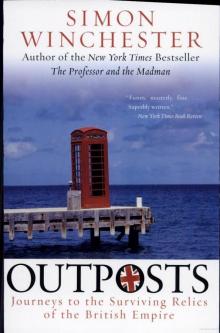 Outposts: Journeys to the Surviving Relics of the British Empire
Outposts: Journeys to the Surviving Relics of the British Empire Atlantic: Great Sea Battles, Heroic Discoveries, Titanic Storms
Atlantic: Great Sea Battles, Heroic Discoveries, Titanic Storms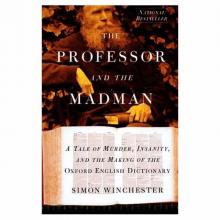 The Professor and the Madman: A Tale of Murder, Insanity
The Professor and the Madman: A Tale of Murder, Insanity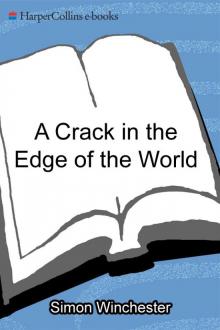 A Crack in the Edge of the World
A Crack in the Edge of the World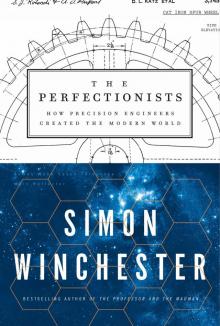 The Perfectionists: How Precision Engineers Created the Modern World
The Perfectionists: How Precision Engineers Created the Modern World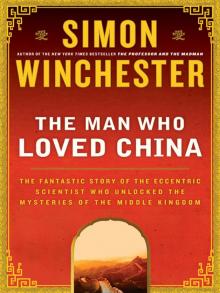 The Man Who Loved China: The Fantastic Story of the Eccentric Scientist
The Man Who Loved China: The Fantastic Story of the Eccentric Scientist The River at the Center of the World: A Journey Up the Yangtze
The River at the Center of the World: A Journey Up the Yangtze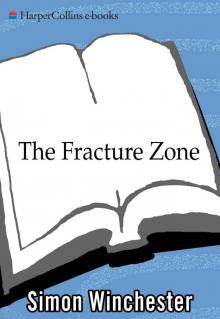 The Fracture Zone: My Return to the Balkans
The Fracture Zone: My Return to the Balkans The Map That Changed the World
The Map That Changed the World Krakatoa: The Day the World Exploded
Krakatoa: The Day the World Exploded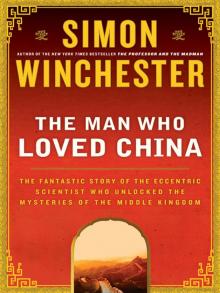 The Man Who Loved China
The Man Who Loved China The River at the Centre of the World
The River at the Centre of the World Bomb, Book and Compass
Bomb, Book and Compass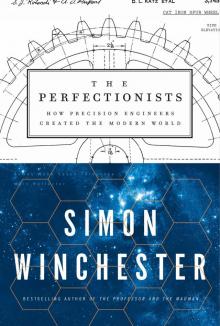 The Perfectionists
The Perfectionists The Meaning of Everything
The Meaning of Everything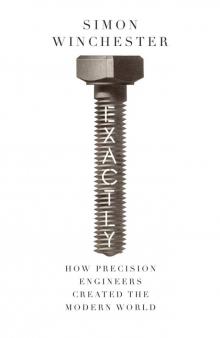 Exactly
Exactly Atlantic
Atlantic Korea
Korea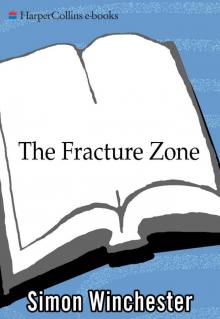 The Fracture Zone
The Fracture Zone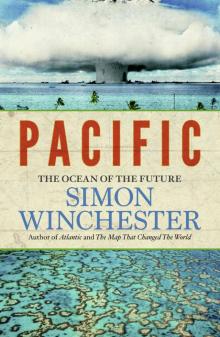 Pacific
Pacific Krakatoa
Krakatoa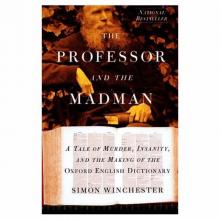 The Professor and the Madman
The Professor and the Madman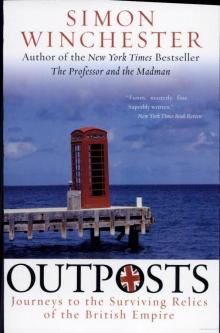 Outposts
Outposts